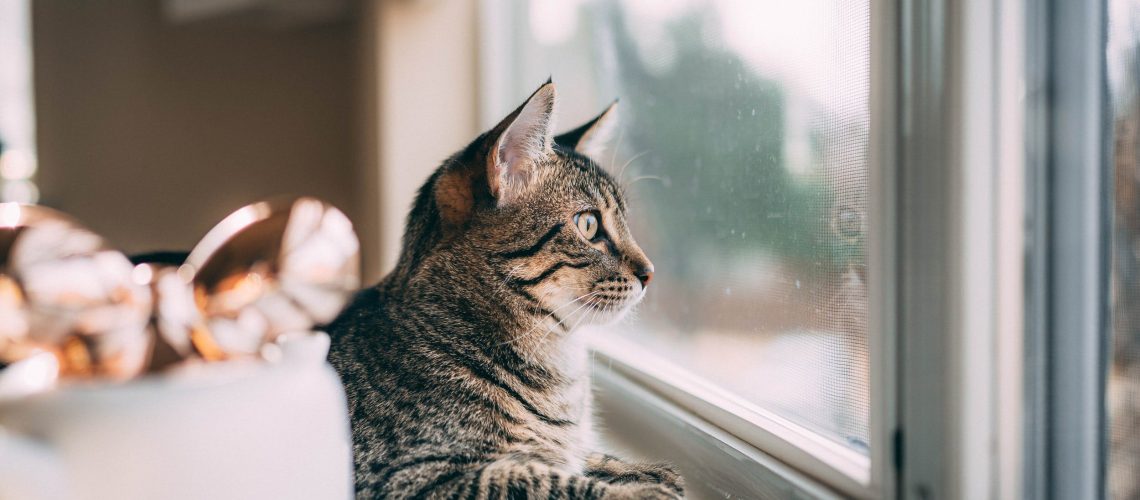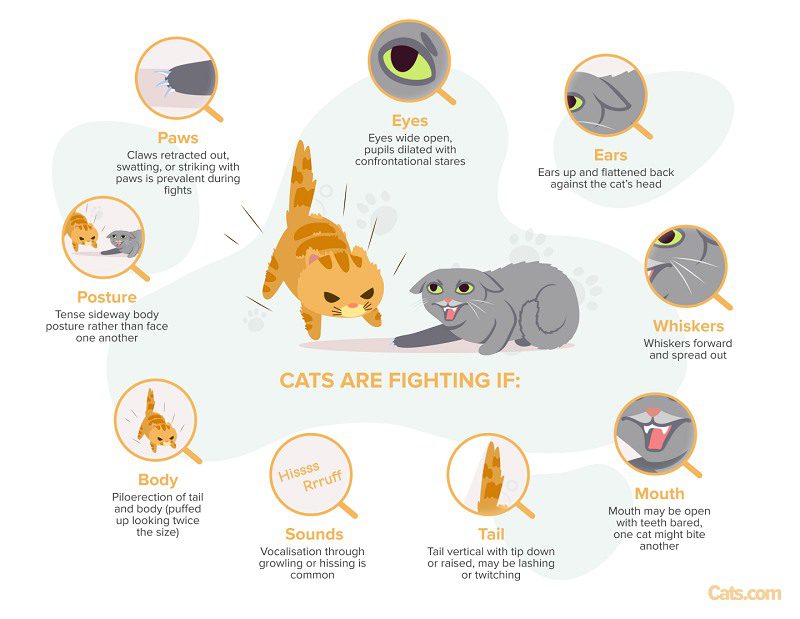Discover the benefits of keeping cats indoors for their safety and well-being. Learn how to provide a stimulating environment and transition outdoor cats to indoor living.
Key Takeaways:
- Indoor cats have a longer lifespan compared to outdoor cats due to reduced risks of accidents, diseases, and predators.
- Keeping cats indoors prevents them from hunting and killing wildlife, helping to preserve the local ecosystem.
- Indoor cats are less likely to get into fights with other animals, reducing the chances of injuries and infections.
- Indoor cats are protected from exposure to harsh weather conditions, parasites, and toxic substances found outdoors.
- Indoor cats are less likely to go missing or be stolen, providing peace of mind for their owners.
Why should cats stay inside?
The benefits of keeping cats indoors
Keeping cats indoors is important for their safety and well-being. When cats are allowed to roam outside, they face many dangers such as getting hit by cars, getting into fights with other animals, or being exposed to diseases. By keeping them indoors, we can protect them from these risks and ensure they live long and healthy lives.
Indoor living also protects cats from diseases that can be transmitted through contact with other animals or contaminated environments. Cats that go outside are more likely to come into contact with parasites like fleas and ticks, which can carry diseases such as Lyme disease or Bartonella. By keeping them indoors, we can minimize their exposure to these harmful pests and reduce the risk of them contracting serious illnesses.
The importance of providing environmental enrichment
While it's important to keep cats indoors for their safety, it's equally important to provide them with a stimulating environment. Indoor cats need mental and physical stimulation to prevent boredom and behavioral problems.
To keep indoor cats entertained and stimulated, provide them with plenty of toys, scratching posts, climbing trees, and interactive playtime. Puzzle feeders or treat-dispensing toys can also help keep their minds active. Additionally, setting up perches near windows will allow them to observe the outside world safely.
Tips for transitioning an outdoor cat to indoors
- Gradually introduce your cat to the indoor environment by starting with a small space like a bathroom or a spare room.
- Provide hiding spots, comfortable bedding, litter boxes, food, water, and toys in the designated indoor area.
- Make sure your cat has access to a scratching post or pad to fulfill their natural instinct to scratch.
- Engage in interactive play sessions with your cat using toys or laser pointers to keep them active and entertained.
- Consider using pheromone sprays or diffusers to create a calming environment for your cat during the transition period.
By following these tips, you can help your outdoor cat adjust to their new indoor lifestyle and provide them with a safe and stimulating environment.
The dangers outdoor cats face
Outdoor cats face a multitude of dangers that can significantly impact their health and well-being. One major danger is the risk of being hit by a car. With busy roads and unpredictable drivers, outdoor cats are at a high risk of being involved in accidents. Additionally, outdoor cats are more susceptible to diseases and parasites. They can come into contact with other infected animals, such as feral cats or wildlife, which can transmit diseases like feline leukemia or rabies.
Another danger for outdoor cats is exposure to harsh weather conditions. Extreme heat or cold can be detrimental to their health, leading to heatstroke or hypothermia. Outdoor cats are also more prone to injuries from fights with other animals, including territorial disputes with other cats or attacks from dogs or wild predators.
How indoor living protects cats from diseases
Indoor living provides a protective barrier for cats against various diseases and parasites. By keeping them indoors, they have limited exposure to infected animals and reduce the risk of contracting contagious illnesses. Indoor cats are less likely to come into contact with stray or feral cats that may carry diseases like feline immunodeficiency virus (FIV) or feline infectious peritonitis (FIP).
Fleas, ticks, and other external parasites are also less likely to infest indoor cats compared to those who venture outdoors. This reduces the chances of flea-borne diseases like Bartonella infection (cat scratch disease) or tick-borne illnesses such as Lyme disease. Regular preventive measures like flea treatments and vaccinations can further protect indoor cats from potential health threats.
The health benefits of keeping cats indoors
Keeping cats indoors offers numerous health benefits for them. Firstly, it helps prevent obesity and promotes weight management. Indoor cats have limited opportunities for hunting and exploring, which can lead to reduced physical activity. However, owners can provide interactive toys, scratching posts, and playtime to ensure they get enough exercise.
Indoor living also protects cats from exposure to toxic substances. They are less likely to come into contact with chemicals like antifreeze or pesticides that may be present outdoors. Additionally, indoor cats are at a lower risk of contracting infectious diseases from other animals or ingesting poisonous plants.
Avoiding fights: How indoor cats stay safe
Indoor cats are at a significantly lower risk of getting into fights compared to their outdoor counterparts. By staying indoors, they avoid territorial disputes with other cats that can result in injuries or the transmission of diseases. Indoor cats also avoid confrontations with dogs or wild predators that may harm them.
To ensure the safety and well-being of indoor cats, it is essential to provide them with an enriched environment. This includes providing vertical spaces like cat trees or shelves for climbing and perching, as well as hiding spots where they can retreat if they feel stressed or threatened.
Potential dangers for outdoor cats
Outdoor cats face numerous potential dangers that can compromise their safety and health. One significant danger is the risk of being exposed to infectious diseases such as feline leukemia virus (FeLV) or feline immunodeficiency virus (FIV). These diseases can be transmitted through fighting or mating with infected cats.
Outdoor cats are also more prone to injuries from fights with other animals. Territorial disputes between outdoor cats can lead to severe wounds and abscesses that require veterinary care. Additionally, outdoor cats may encounter accidents involving vehicles or become victims of animal cruelty.
Keeping indoor cats entertained and stimulated
Indoor living doesn't have to be boring for cats. There are various ways to keep them entertained and mentally stimulated. Providing interactive toys, such as puzzle feeders or treat-dispensing toys, can engage their natural hunting instincts and provide mental stimulation.
Creating a stimulating environment with scratching posts, climbing trees, and perches allows cats to exercise and explore their surroundings. Rotating toys regularly and providing hiding spots or cardboard boxes can also keep indoor cats engaged and prevent boredom.
Tips for transitioning an outdoor cat to indoors
Transitioning an outdoor cat to an indoor lifestyle requires patience and careful planning. Start by gradually limiting their outdoor access while providing enticing indoor alternatives. Introduce them to a designated area indoors with food, water, litter box, scratching posts, and comfortable resting spots.
Provide plenty of environmental enrichment through interactive toys, window perches, or bird feeders outside the windows to simulate the outdoor experience. Gradually increase the time spent indoors while ensuring they receive enough playtime and exercise to prevent frustration or boredom.
Ensuring enough exercise and playtime for indoor cats
Indoor cats still require regular exercise and playtime to maintain their physical health and mental well-being. Engaging in interactive play sessions with wand toys or laser pointers can help fulfill their hunting instincts. Regularly rotating toys or introducing new ones keeps them interested and prevents monotony.
Creating vertical spaces like cat trees or shelves provides opportunities for climbing and jumping. Encouraging active play with feather toys or balls helps stimulate their agility and coordination. Additionally, dedicating time each day for interactive play sessions strengthens the bond between owners and their indoor cats.
| Top Reasons to Keep Cats Indoors |
|---|
| 1. Safety from outdoor dangers |
| 2. Protection of wildlife |
| 3. Reduced risk of diseases and parasites |
| 4. Longer lifespan and improved health |
In conclusion, keeping cats indoors is the best decision for their well-being, safety, and the environment. It ensures they are protected from outdoor hazards, reduces their impact on wildlife, lowers the risk of diseases, and promotes a longer, healthier life. By providing a safe and enriched indoor environment, we can give our beloved feline companions
Why is it better to keep cats indoors?
When your cat is outdoors, it can act as both a hunter and potential prey. Outdoor cats are known for hunting and killing birds, mice, rabbits, and other small animals. The concern is that these animals may carry diseases that can be harmful to both cats and humans. Additionally, the cat may try to bring these small animals into your home.
Do cats prefer being indoors?
While some individuals believe that allowing cats to roam outdoors improves their quality of life, the majority of experts argue that keeping them indoors is the healthier option. However, if you wish to provide your cat with the best of both worlds, you can attempt to train them to walk on a leash using a specially designed cat harness, which will ensure their safety.
Are cats happier inside or outside?
If you enjoy letting your cat relax outside, you might be inclined to stop reading, but experts from AHS want to inform you that your cat is not necessarily any happier outdoors than it would be indoors.
Why does my outdoor cat want to stay inside?
Health problems are often the cause, so it is a good thing that you had her checked and ruled out that possibility. However, cats are very sensitive animals, so something else could have disturbed her and made her not want to go outside. Have there been any changes in your household, like a visitor or new resident?
Is it OK to let cats outside?
Allowing cats to go outside occasionally is not a terrible idea as long as certain measures are taken. If you choose to let them out, it is important to ensure their safety by following these guidelines: Ensure that their vaccinations are up to date and consider training them to wear a harness.
Do indoor outdoor cats live longer?
The answer becomes evident when you consider that indoor cats typically live for 10 to 20 years on average, while cats that go outside typically have a lifespan of only 2 to 5 years.

















